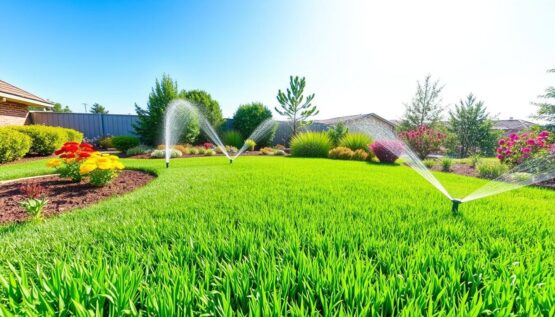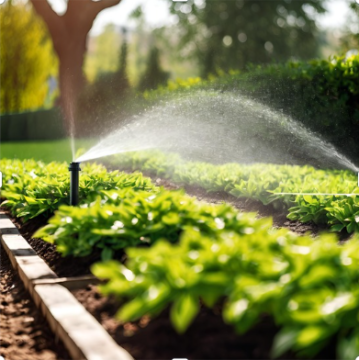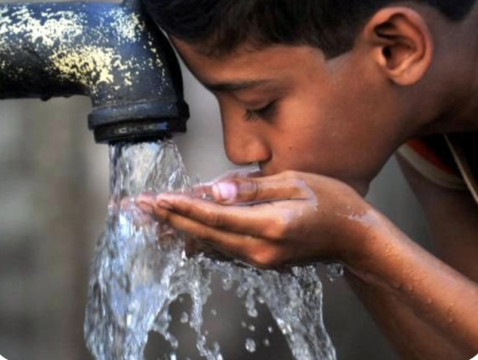Water softening systems remove minerals that make water hard. This makes water better for home use. Salt-free water softeners are seen as a green choice compared to salt-based systems. But, it’s key to know they don’t soften water like traditional systems do.
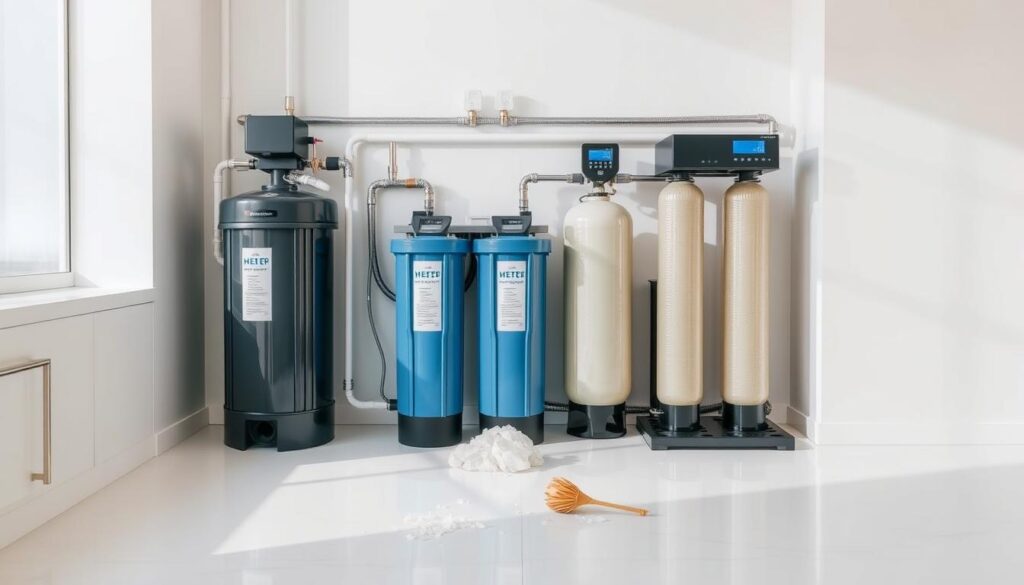
It’s important to know the difference between salt-based and salt-free water softeners. Salt-free systems change the minerals in water, not remove them. This makes water easier to use, but it’s not the same as softening it.
Introduction to Water Softening
Traditional systems use salt to soften water. This makes water softer, better for skin and appliances. Knowing the difference between these systems helps choose the right one for your home or business.
Key Takeaways
- Salt-free water softeners do not actually soften water, but rather condition it
- Traditional salt-based water softening systems remove minerals that cause water hardness
- Salt-free water softeners alter the properties of minerals, preventing them from sticking to surfaces
- Water conditioning is distinct from true water softening
- Understanding the differences between salt-based and salt-free systems is crucial for making an informed decision about water treatment
- Water softening systems can have a significant impact on household appliances and skin health
Understanding True Water Softening
Many homes face hard water issues like scaling and staining. It’s key to know the science behind water hardness and how traditional softeners function. Water conditioning removes minerals like calcium and magnesium, which make water hard.
Ion exchange is key in salt-based softeners. It swaps these minerals for sodium or potassium ions. This makes water soft, which is good for cleaning, laundry, and drinking.
The Chemistry Behind Water Hardness
Minerals like calcium and magnesium make water hard. They cause scaling and staining, leading to hard water problems. Knowing the chemistry of water hardness helps solve these issues.
How Traditional Salt-Based Softeners Work
Traditional softeners use ion exchange to remove minerals. They swap these minerals for sodium or potassium ions. This creates soft water, which is then used throughout the home to prevent hard water problems.
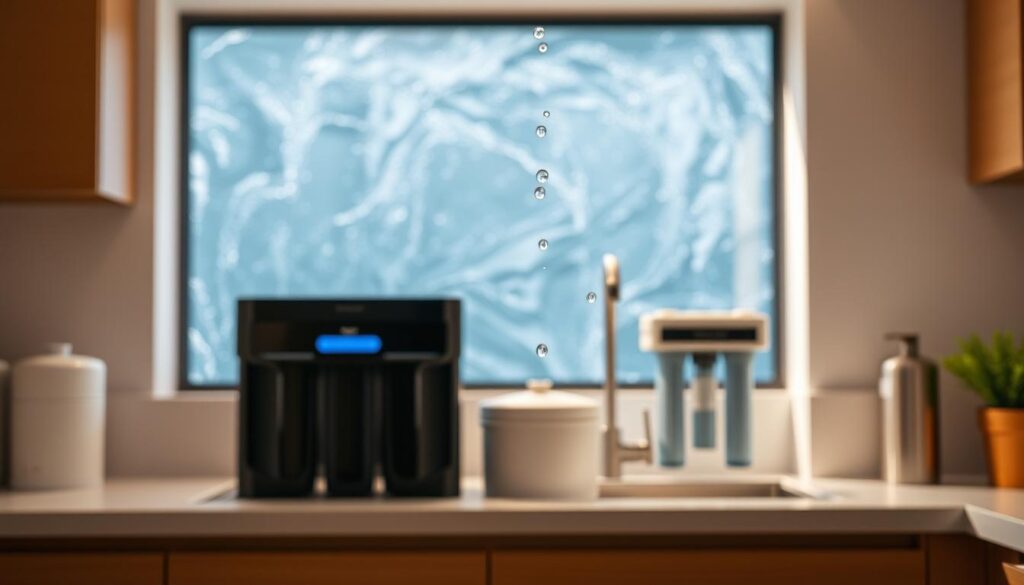
Definition of Soft Water
Soft water has low mineral levels, like calcium and magnesium. It’s great for cleaning, laundry, and drinking. Soft water prevents scaling and staining, making it vital for water conditioning.
Understanding water hardness and softeners helps solve hard water issues. Water conditioning removes minerals to make water soft. It’s a key part of keeping your home maintained.
The Truth About Salt-Free Water Softeners
Salt-free water softeners are often seen as a good alternative to traditional systems. But, it’s key to know how they work and their limits. These systems use magnetic fields or special media to change minerals in water, stopping scale buildup.
Unlike traditional systems, salt-free ones don’t remove minerals from water. They change how minerals act in water and with surfaces. This is called water conditioning, not softening. Water conditioning is more accurate, as it changes water properties without removing minerals.
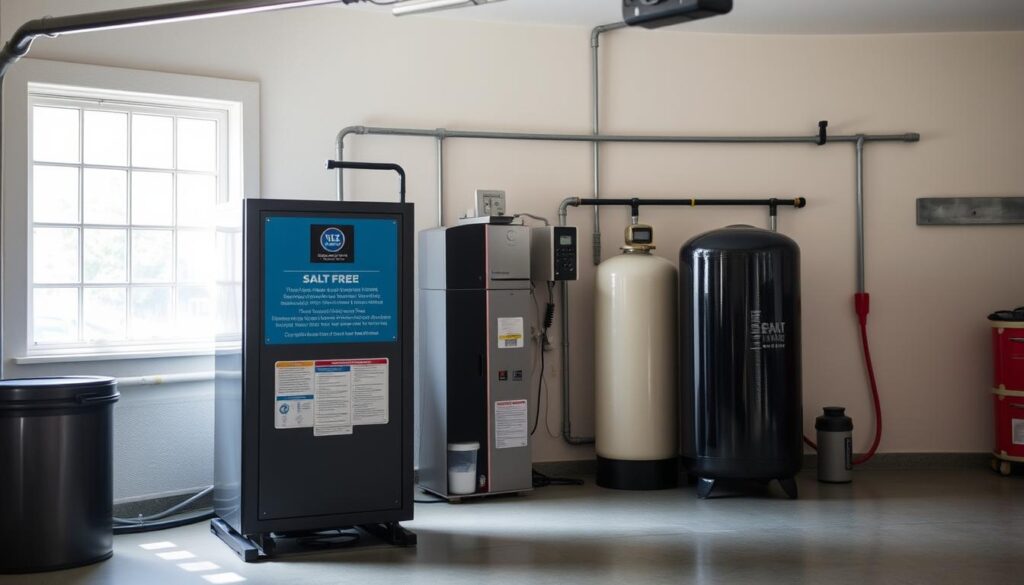
- Reduced scale buildup
- Lower maintenance costs
- No need for salt or other chemicals
Even though they’re not as effective as traditional systems, salt-free softeners offer big benefits. Knowing the differences between them and traditional systems helps you choose the best for your home.
Water Conditioning vs. Water Softening: Key Differences
Water conditioning and water softening are often confused with each other. But they are not the same. Water conditioning uses salt-free systems to clean water and improve its taste and smell. Water softening, on the other hand, removes minerals that make water “hard.”
Water conditioning uses methods like filtration and distillation to clean water. Water softening, however, uses a chemical process to remove minerals like calcium and magnesium.
Physical Process of Salt-Free Systems
Salt-free systems condition water without removing good minerals. This is good for those who want to keep their water natural. Traditional water softening systems, though, use chemicals to remove minerals, which is better for very hard water.
Chemical Process of True Softening
The chemical process of true softening uses ion exchange resins to remove hard water minerals. This method is often paired with reverse osmosis. Reverse osmosis can remove up to 99% of impurities, including solids, bacteria, and viruses. Together, they make water perfect for drinking, cooking, and cleaning.
Common Marketing Claims vs. Scientific Reality
Some water softening system makers make claims that don’t always match up with science. Hybrid treatment systems are often said to solve hard water issues. But do they really work? It’s key to know the truth and what these systems can and can’t do.
Looking closer, some companies make promises they can’t keep. For example, some salt-free systems say they remove minerals causing water hardness. But they might just change how these minerals act, not remove them. This isn’t the same as true water softening, which removes minerals.
Here are some common marketing claims to watch out for:
- Claims of “salt-free” water softening that don’t actually remove minerals and ions
- Promises of “Scale reduction” that may not be backed by scientific evidence
- Assertions of “easy maintenance” that may not be entirely accurate
It’s important to question these claims and understand the science behind water softening. Water softening systems that use a mix of technologies, like hybrid systems, might offer a better fix for hard water. By doing your homework and knowing the facts, you can choose the right water treatment system for you.
Alternative Solutions for Hard Water Problems
Dealing with hard water problems? It’s key to look into different solutions. You can soften water through water conditioning and hybrid systems. Salt-based systems are also a common choice.
These systems replace hard minerals with sodium, softening the water. But, some worry about the taste or environmental effects. Reverse osmosis options can soften drinking water by removing impurities.
Hybrid treatment systems are another option. They mix technologies for a complete water solution. These systems tackle hard water and other contaminants, making them a favorite among homeowners.
- Traditional salt-based systems for water softening
- Reverse osmosis options for drinking water
- Hybrid treatment systems for comprehensive water treatment
Finding the right solution for hard water is crucial. It should remove minerals and impurities effectively. It’s also important to consider environmental impact, cost, and personal taste. By exploring these options, you can find a good solution for your hard water problems.
Conclusion: Making an Informed Decision About Water Treatment
Homeowners face many choices when dealing with hard water. Salt-free water softeners might seem easy, but they don’t soften water like traditional systems do. The science behind water hardness and softening is complex.
It’s important to know the difference between conditioning and softening. This knowledge helps in making the right choice.
The best water treatment depends on what you need and want. You should think about your water quality, budget, and goals. Some might prefer a hybrid system that uses different technologies.
Choosing wisely means understanding water treatment science and the limits of salt-free systems. This way, you can solve hard water issues and keep your plumbing in good shape.
FAQ
What is the difference between salt-free water softeners and traditional salt-based softeners?
Salt-based softeners remove minerals like calcium and magnesium from water. This makes the water soft. Salt-free water softeners, or conditioners, change the minerals’ properties. They prevent scale buildup without removing the minerals.
Do salt-free water softeners actually soften water?
No, they don’t. They are called water conditioners because they don’t remove minerals. Instead, they change them to stop scale formation.
How do traditional salt-based water softeners work?
They use ion exchange to remove calcium and magnesium. These minerals are replaced with sodium. This makes the water soft and prevents scale buildup.
What is the definition of soft water?
Soft water has less calcium and magnesium. It’s made by removing these minerals. Soft water cleans better, uses less soap, and stops scale buildup.
How do salt-free water softeners work compared to traditional softeners?
Salt-free softeners change the minerals’ properties with magnetic fields or media. This stops scale formation. But, the minerals are not removed, so the water remains hard.
How can I measure the effectiveness of water conditioning versus water softening?
Use a water hardness test kit. It shows the mineral content before and after treatment. Salt-based softeners greatly reduce hardness. Salt-free conditioners may only slightly change it.
What are some common marketing claims about salt-free water softeners that may be misleading?
Claims include that they “soften” water and are “environmentally friendly.” But, they don’t truly soften water. They condition it, and may not work as well as traditional softeners.
What are some alternative solutions for addressing hard water problems?
Besides traditional softeners, there are reverse osmosis systems for drinking water. Hybrid systems combine technologies for comprehensive treatment.

